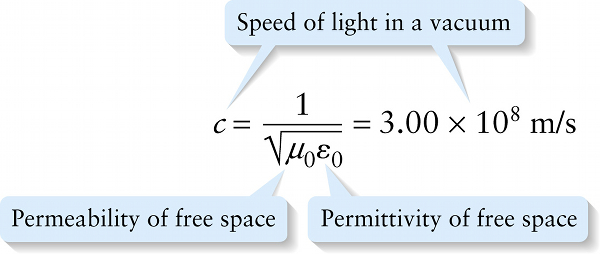Speed of light in a vacuum (22-11)
Question 1 of 3
Question
Speed of light in a vacuum
{"title":"Speed of light in a vacuum","description":"Correct!","type":"correct","color":"#99CCFF","code":"[{\"shape\":\"poly\",\"coords\":\"82,133\"},{\"shape\":\"rect\",\"coords\":\"10,16,12,16\"},{\"shape\":\"poly\",\"coords\":\"144,22\"},{\"shape\":\"rect\",\"coords\":\"3,22,13,43\"},{\"shape\":\"rect\",\"coords\":\"134,12,301,40\"}]"} {"title":"Permittivity of free space","description":"Incorrect","type":"incorrect","color":"#008000","code":"[{\"shape\":\"rect\",\"coords\":\"86,44,98,61\"}]"} {"title":"Permeability of free space","description":"Incorrect","type":"incorrect","color":"#333300","code":"[{\"shape\":\"rect\",\"coords\":\"61,45,80,64\"}]"}Review
This equation agrees with Equation 22-1 for the speed of light in a vacuum. The same mathematical analysis that leads to Equation 22-11 also relates the amplitudes E0 and B0 of the electric and magnetic fields in the wave: The result is that B0=E0/c, the same result that we stated in Section 22-2 (Equation 22-4).

